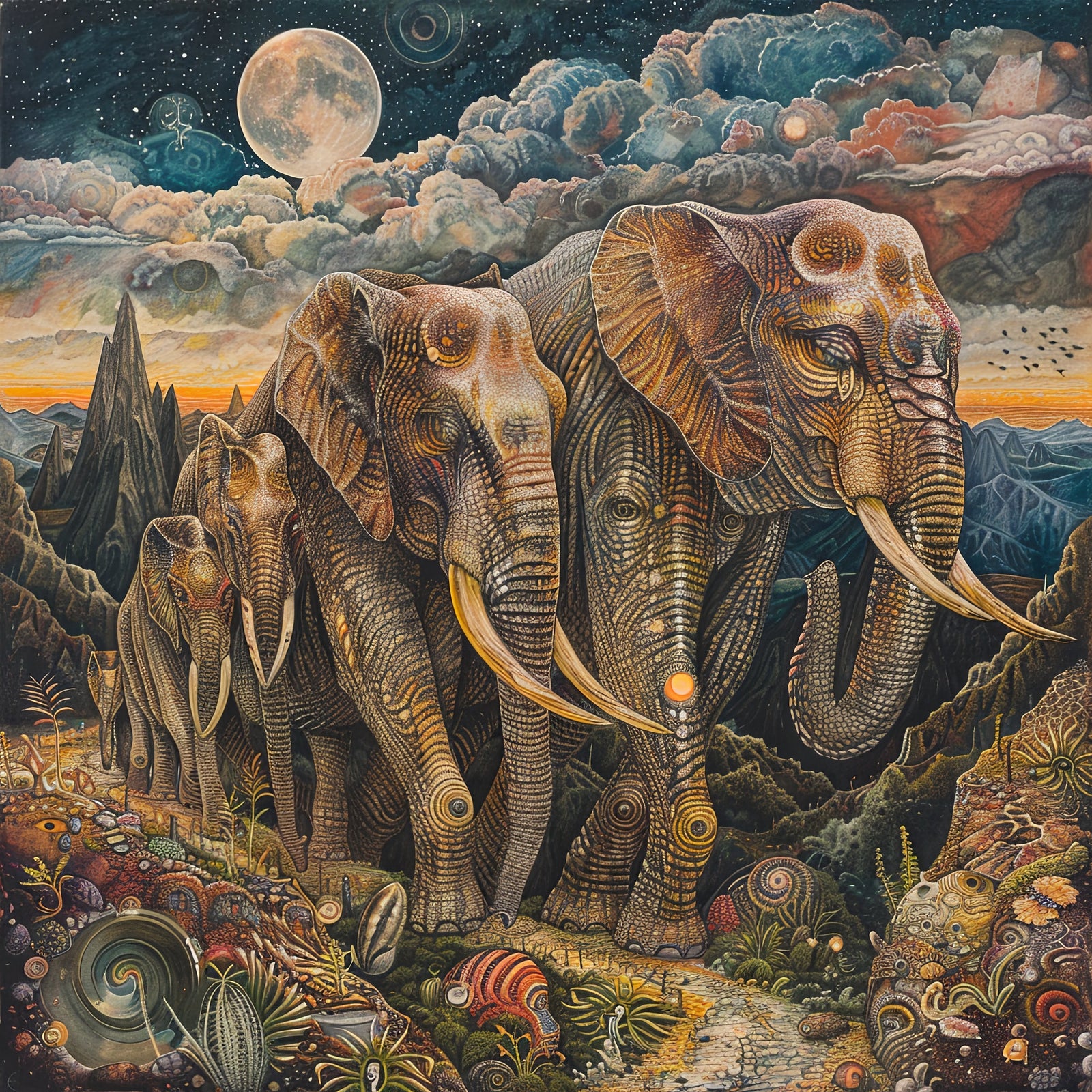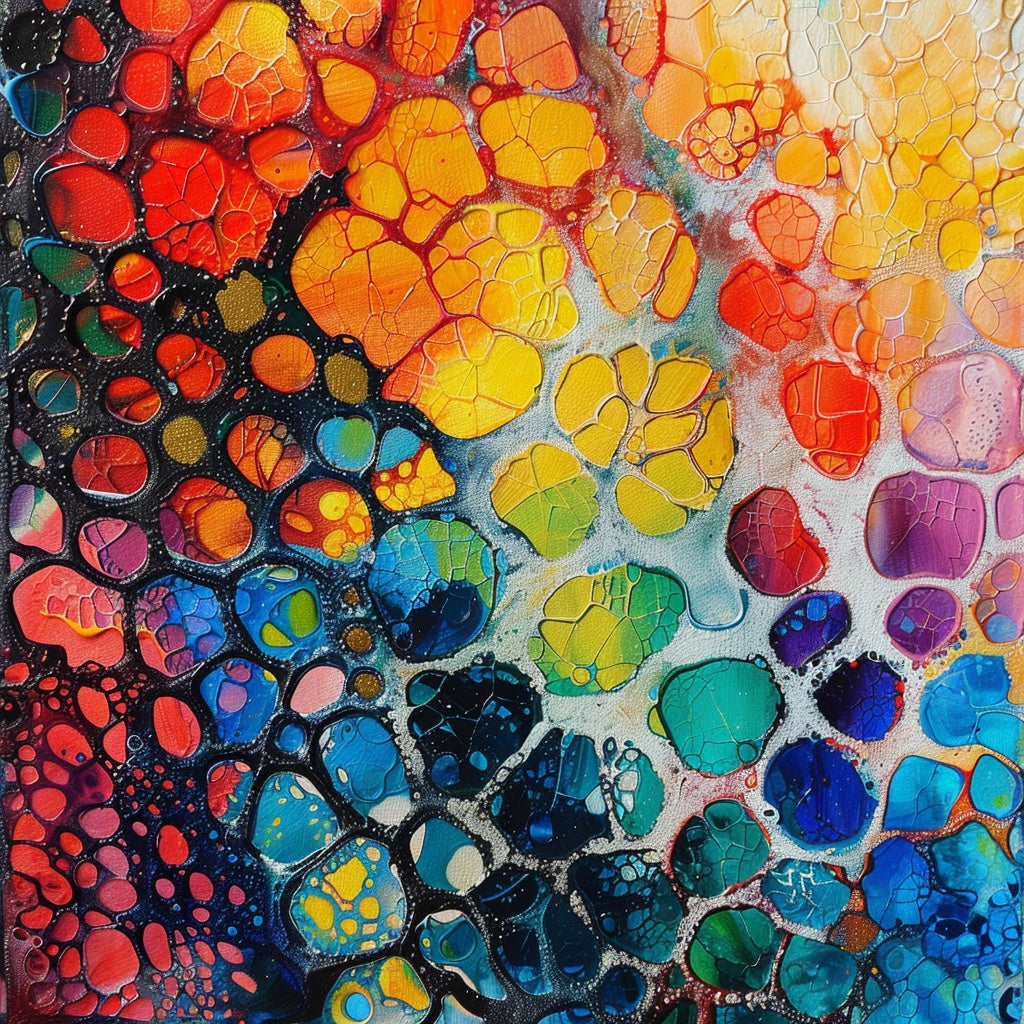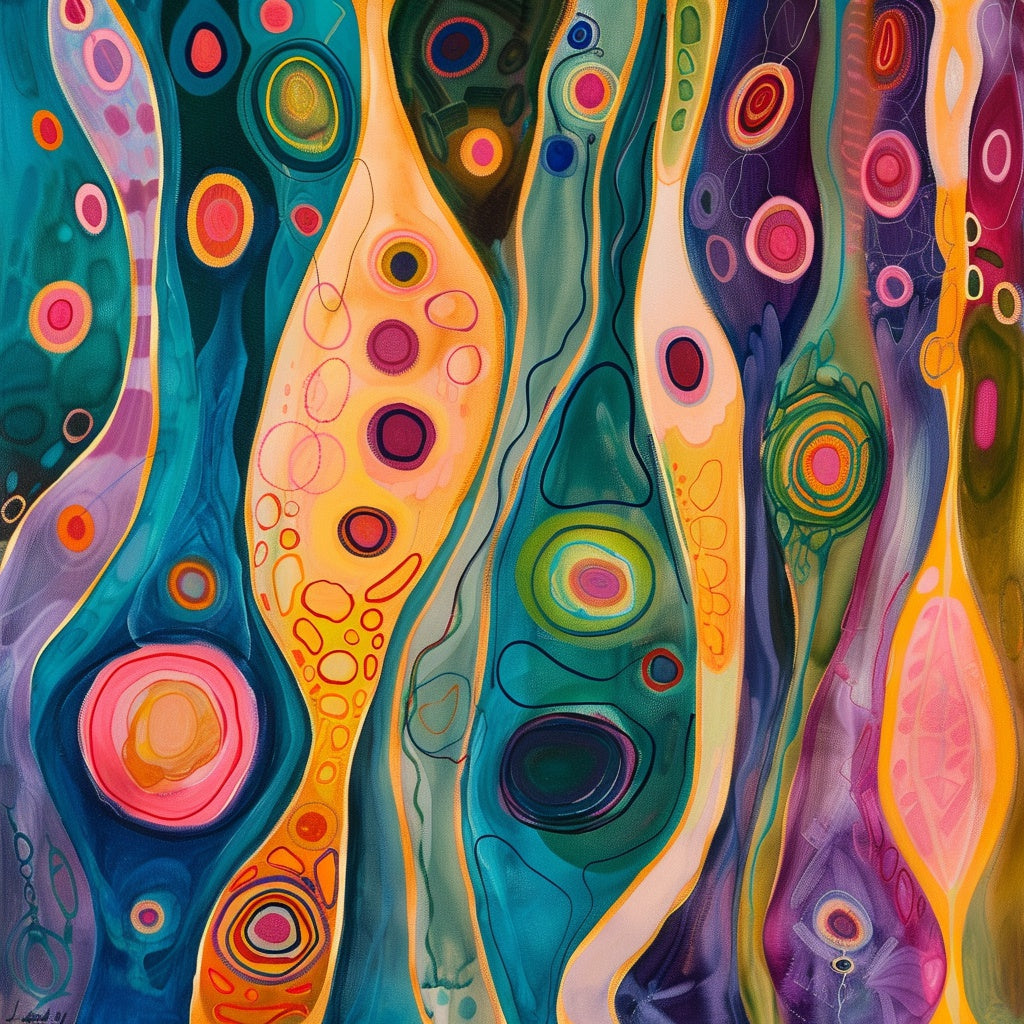AI Art and Copyright Law: Navigating the Complexities of Machine Creativity
Introduction
The advent of sophisticated Artificial Intelligence (AI) tools capable of generating art has sparked a significant debate within the creative community and the legal field. These advancements challenge the traditional notions of authorship, ownership, and the very definition of art, leading to a clash with existing copyright laws. As copyright law has adapted to various technological innovations throughout history, from the printing press to photography and the internet, it now faces the complex task of accommodating AI-generated art. This article delves into the intricate intersection of AI art generation and copyright law, exploring the challenges, legal precedents, and potential future implications of this rapidly evolving technology.
The Human Authorship Requirement in Copyright Law
Copyright law in the United States, rooted in the US Constitution, grants exclusive rights to the creators of "original works of authorship." These rights aim to incentivize creativity and innovation by ensuring that artists can benefit from their work. To qualify for copyright protection, a work must meet three fundamental requirements: fixation, originality, and authorship. Fixation refers to the embodiment of the work in a tangible medium, while originality requires that the work be independently created and possess a minimal degree of creativity. Authorship, a cornerstone of copyright law, mandates that the work be done by a human author. This emphasis on human creativity presents a significant challenge for AI-generated art. The US Copyright Office (USCO) has explicitly stated that AI-generated outputs, where "expressive elements are determined by a machine," cannot be copyrighted. This stance is based on the belief that extending copyright protection to machine-generated works would undermine the constitutional goals of copyright, which are to promote human ingenuity. This principle was upheld in *Naruto v. Slater*, also known as the "monkey selfie" case, where a court ruled that a monkey could not own the copyright to a photograph it took. The USCO has clarified that AI-assisted works can be copyrighted if there is "sufficient human involvement." This means that artists must demonstrate a significant creative contribution beyond simply providing prompts to the AI. For example, in the case of the graphic novel *Zarya of the Dawn*, the USCO granted copyright protection to the text and arrangement, which were created by a human author, but not the AI-generated images.
AI as a Tool vs. AI as an Author
A crucial distinction exists between AI used as a tool to assist human artists, and AI used as the sole creator of art. When AI serves as a tool, akin to a digital paintbrush or filter, the human artist retains control over the creative process, and the resulting work is likely copyrightable. However, when AI generates art autonomously based on simple prompts, the output falls outside the scope of current copyright protection. It is recommended to credit the AI system used, although not legally required, which may become a best practice in the future. The key factor is the level of human creative input; if the AI is merely an instrument in the hands of a human artist, the resulting work is more likely to be eligible for copyright protection. However, if the AI acts as an autonomous creator, generating art with minimal human guidance, the output is generally not copyrightable.
Fair Use Doctrine and AI Training Data
Another critical legal issue concerns the use of copyrighted works as training data for AI models. These models learn by analyzing vast datasets of images, text, and code, often scraped from the internet. This raises concerns about potential copyright infringement, as AI systems may be using protected works without permission. The "fair use" doctrine provides an exception to copyright infringement for specific uses, such as criticism, commentary, news reporting, teaching, scholarship, or research. Whether the use of copyrighted works for AI training falls under fair use is a complex question that courts are currently addressing. To determine whether a particular use constitutes fair use, courts consider four factors:
- Purpose and character of the use: This examines whether the use is commercial or non-profit and whether it is transformative, adding something new or using the work for a different purpose.
- Nature of the copyrighted work: This considers whether the work is factual or creative, with creative works receiving stronger protection.
- Amount and substantiality of the portion used: This assesses the quantity and quality of the copyrighted material used.
- Effect of the use on the potential market for the original work: This examines whether the use harms the market for the original work.
In the context of AI training, the transformative nature of the use, where AI models analyze data to create new works may favor fair use. However, the massive scale of data used and the potential impact on the market for original art could argue against fair use. The application of fair use to AI training is still being debated, and it remains a significant legal hurdle for AI developers.
Landmark Legal Cases and Emerging Trends
Several lawsuits have emerged challenging the use of copyrighted works in AI training and the copyright status of AI-generated outputs, shaping the legal landscape and providing insights into how courts are approaching these issues.
- *Andersen v. Stability AI*: In this case, artists sued Stability AI, Midjourney, and DeviantArt, alleging copyright infringement due to the use of their works in training AI image generators. This case highlights the concerns of artists who believe their creative work is being exploited without consent or compensation. The outcome of this case could set a precedent for how courts interpret the relationship between AI innovation and intellectual property rights.
- *Authors Guild v. OpenAI*: This case involves a class of authors who claim OpenAI violated copyright law by using their books to train large language models. This lawsuit raises questions about the scope of fair use and the rights of authors in the digital age.
- *Getty Images v. Stability AI*: Getty Images sued Stability AI, alleging copyright infringement and trademark infringement related to the use of their images in AI training and the generation of outputs that mimic their watermarks. This case highlights the challenges of protecting intellectual property in the age of AI.
International Perspectives on AI Copyright
Different countries are adopting varying approaches to the copyright of AI-generated art, highlighting the need for international collaboration and harmonization of copyright laws. Some countries, like Australia, do not recognize AI-generated works as copyrightable. Conversely, China grants full copyright to AI inventions. India recognizes AI-generated works on the condition of a human co-author. Japan has a copyright exception for data training, while Singapore has liberal copyright rules about AI training. The UK provides statutory protection for computer-generated works, while the US requires human authorship. These varying approaches emphasize the need for international cooperation to establish uniform standards for copyright protection in the AI era. The differences in legal approaches across countries reflect varying views on the role of AI in creativity and the need to balance innovation with the rights of human creators.
Future Implications and Potential Solutions
The rapid advancement of AI technology suggests that the legal and ethical challenges surrounding AI art generation will only become more complex. As AI systems become more sophisticated, the line between human and machine creativity may blur, further challenging traditional notions of authorship and ownership. Potential solutions include:
- Developing new legal frameworks: This could involve creating new categories of intellectual property rights or recognizing AI as collaborators in the creative process.
- Implementing licensing models: This could involve establishing clear guidelines and mechanisms for licensing copyrighted works for AI training, ensuring fair compensation for artists.
- Promoting transparency and ethical AI development: This could involve requiring AI developers to disclose the sources of their training data and ensuring that AI systems are developed and used responsibly.
In conclusion, the impact of AI art generation on copyright law is profound and far-reaching. This technology challenges fundamental principles of authorship, ownership, and the very definition of art. While legal frameworks are still evolving, there is a clear need to balance the rights of artists with the potential of AI to revolutionize creative expression. By fostering dialogue, promoting ethical AI development, and adapting legal frameworks to the realities of this new technology, we can ensure a future where both human and machine creativity can flourish. The legal landscape is still evolving, but the intersection of AI and copyright will continue to be a significant area of development in the coming years.
AI-Generated Content and Copyright Law: What We Know - Built In, accessed February 11, 2025. https://builtin.com/artificial-intelligence/ai-copyright
Copyright Office Releases Part 2 of Artificial Intelligence Report, accessed February 11, 2025. https://www.copyright.gov/newsnet/2025/1060.html
What Is an "Author"?-Copyright Authorship of AI Art Through a Philosophical Lens | Published in Houston Law Review, accessed February 11, 2025. https://houstonlawreview.org/article/92132-what-is-an-author-copyright-authorship-of-ai-art-through-a-philosophical-lens
Can You Copyright AI Art: Legal Insights | ScoreDetect Blog, accessed February 11, 2025. https://www.scoredetect.com/blog/posts/can-you-copyright-ai-art-legal-insights
Copyright Ownership of Generative AI Outputs Varies Around the World - Cooley LLP, accessed February 11, 2025. https://www.cooley.com/news/insight/2024/2024-01-29-copyright-ownership-of-generative-ai-outputs-varies-around-the-world
US Copyright Office changes stance on AI-assisted artwork - Straight Arrow News, accessed February 11, 2025. https://san.com/cc/us-copyright-office-changes-stance-on-ai-assisted-artwork/
can AI art be copyrighted? not if there's no human input, US office says - Designboom, accessed February 11, 2025. https://www.designboom.com/art/can-ai-art-be-copyrighted-not-if-theres-no-human-input-us-office-01-31-2025/
AI-generated art requires human contributions for US copyright protection, feds say - UPI, accessed February 11, 2025. https://www.upi.com/Top_News/US/2025/01/30/ai-generated-art-copyright/7241738266813/
AI art is facing a copyright problem. Here's what it means for creators - Verbit, accessed February 11, 2025. https://verbit.ai/legal/ai-art-is-facing-a-copyright-problem-heres-what-it-means-for-creators/
Fair Use: An Exception to Copyright | Kelvin Smith Library, accessed February 11, 2025. https://case.edu/library/research-tools/digital-scholarship/publishing-and-copyright/fair-use-exception-copyright
Artificial Intelligence Impacts on Copyright Law - RAND, accessed February 11, 2025. https://www.rand.org/pubs/perspectives/PEA3243-1.html
Andersen v. Stability AI: The Landmark Case Unpacking the Copyright Risks of AI Image Generators - NYU Journal of Intellectual Property & Entertainment Law, accessed February 11, 2025. https://jipel.law.nyu.edu/andersen-v-stability-ai-the-landmark-case-unpacking-the-copyright-risks-of-ai-image-generators/
Exceptions - CopyrightUser, accessed February 11, 2025. https://www.copyrightuser.org/understand/exceptions/
6 AI Cases And What They Mean For Copyright Law - Crowell & Moring LLP, accessed February 11, 2025. https://www.crowell.com/a/web/7QtNejMH1FSM1n5Ddt6cdU/6-ai-cases-and-what-they-mean-for-copyright-law.pdf
Case Tracker: Artificial Intelligence, Copyrights and Class Actions | BakerHostetler, accessed February 11, 2025. https://www.bakerlaw.com/services/artificial-intelligence-ai/case-tracker-artificial-intelligence-copyrights-and-class-actions/
The Future of AI and Copyright: New Roadmaps | by Mihrican Altunbıçak - Medium, accessed February 11, 2025. https://mihrican.medium.com/the-future-of-ai-and-copyright-new-roadmaps-aaafb9c6aa06
COMPARATIVE ANALYSIS OF IPR IN DIFFERENT COUNTRIES FOR AI GENERATED WORKS - Manupatra, accessed February 11, 2025. https://articles.manupatra.com/article-details/COMPARATIVE-ANALYSIS-OF-IPR-IN-DIFFERENT-COUNTRIES-FOR-AI-GENERATED-WORKS
Pixels And Patents: Decoding A.I. Art & Copyright Law - IIPRD, accessed February 11, 2025. https://www.iiprd.com/pixels-and-patents-decoding-a-i-art-copyright-law/
AI Training and Copyright Infringement: Solutions from Asia | TechPolicy.Press, accessed February 11, 2025. https://www.techpolicy.press/ai-training-and-copyright-infringement-solutions-from-asia/
The Impact of AI-Generated Content on Copyright Law: Challenges and Future Directions, accessed February 11, 2025. https://www.visionfactory.org/post/the-impact-of-ai-generated-content-on-copyright-law-challenges-and-future-directions



Leave a comment (all fields required)